The past 16 months have been very challenging for all of us. Anyone who just smiles (please take off your mask if you’re vaccinated and driving by yourself) and pretends otherwise is delusional. Everybody found their own path or distraction and while we all probably watched a lot of Disney+ or Netflix, some of us (and I hope it was more than just myself) spent a lot of time outdoors and listening to music in the backyard. Good outdoor speakers can be a godsend. And something that can be integrated into a backyard movie theater which we discussed in June.
I’m not referring to some subpar Bluetooth speaker to roam around the yard with while spying over the fence on your neighbors who were not wearing masks at the dinner table. Don’t be that person.
We’re going to cover wireless outdoor speakers next week so don’t think we’re ignoring them.
Outdoor speakers are a huge category in 2021; especially in this housing market where people are either renovating their homes or moving to another state to get away from New York or California. I don’t care how large or small your property is — there are wired outdoor speakers that are dramatically better than any wireless speaker and most are designed to survive the heat or really harsh winter months.
The only benefits of cheap outdoor wireless speakers are cost, portability, and the ability to stream from your phone.
What? Those are the only things that really matter.
If you live in an apartment building and only have a balcony, you’re clearly fine with a portable wireless speaker. Bluesound and Sonos make perfectly acceptable products for that scenario.
But if you have a yard and want audio all over the property — wireless speakers are not going to work that well and you do have to bring them inside.
Most wireless speakers are not really designed for bad weather. Raise your hand if you’re fine leaving your Sonos Roam outside in the rain all night?
Why Outdoor Speakers?
When it comes to outdoor sound, coverage and control are important considerations. Unless your patio or deck is the size of a broom closet or you like to BBQ indoors (Fire Marshall Bob discourages that), you probably want the ability to hear sound from different locations on your property. With separate outdoor volume controls, you can easily crank the baseball game while you grill at one location and pump music out for your guests elsewhere.
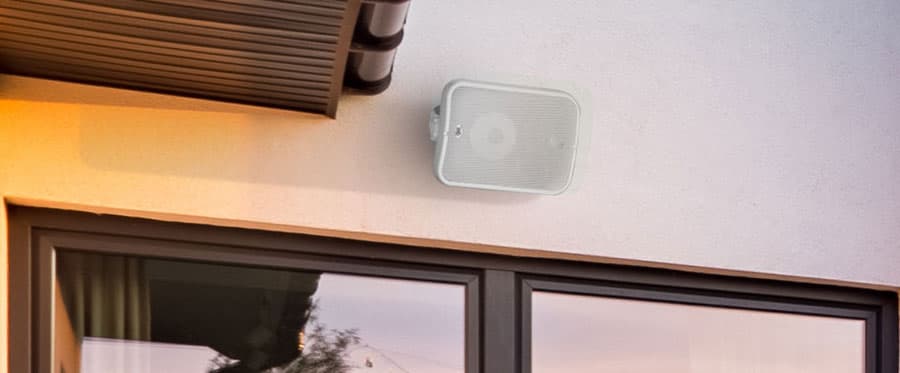
Also, depending on where you live, there may be rules about blasting music on your property past a certain hour at night. Nothing ruins a late-night party with friends faster than a visit from your local police. Placing speakers where you can hear them easily, but your neighbors don’t necessarily have to is a brilliant move, if you can pull it off.
The final and most pressing concern for most people will be cost. Installing an outdoor speaker system doesn’t have to break the bank, but be realistic about your budget and what you are trying to achieve.
If you are starting from scratch, prepare to spend anywhere from $200 to $800 for a pair of high quality weatherproof speakers, $500 or more for a receiver with secondary zones (unless your existing A/V receiver already has this feature), and $200-$1,000 on wiring, PVC conduit, brackets, and weatherproof volume controls.
Most consumers will also have to hire an A/V integrator to install everything, so it’s easy to see how a simple set-up could cost you over $1,000 without much effort. But if you’re handy with a drill and have a willing friend, installing a system can be a weekend project with a happy ending. Not that kind of happy ending.
What Should I Buy?
Hurricane Sandy caused more than $30,000 worth of damage to the exterior of our home on the Jersey Shore, tearing out trees, flattening all of our fencing, and removing siding and shingles from the walls and roof.

We were so preoccupied with getting the house ready that we forgot to remove our Definitive Technology AW 6500 outdoor loudspeakers from the deck. I didn’t even think to look and see if they had survived for more than five days, and with no power for 9 days, we didn’t have the ability to test them anyway.
Not only did they survive, but they proved to be a psychological boost when the power returned as we were stuck in the backyard clearing crushed tree limbs for two weeks. That’s what you want in a pair of outdoor loudspeakers: bullet-proof construction.
All this to say: you must buy outdoor speakers. Resist any temptation to take an old pair of plastic boombox speakers and toss ’em outside. Whether you live in Sudbury, Miami or Portland; weather has the potential to turn your investment into a horror show unless you buy products that are designed specifically to be weatherproof against all forms of moisture, wind, and extreme temperatures.
Fast forward to 2021 and those Definitive speakers have moved on to my parent’s home in Florida where they flank their outdoor pool so my father can enjoy listening to his hockey and baseball games outside and in total peace and quiet. Mom isn’t a big fan of the humidity. Or the NHL Network.

The Denon AVR that powered those speakers is still working perfectly but we upgraded to two pairs of Polk Audio Atrium 4 outdoor speakers.
Weather resistant? Check. Good sound quality for only $379 USD. The bass could be tighter for sure and I generally don’t crank it that loud on our deck which is 25′ x 10′.
Outdoor speakers have made huge strides in the past few years. Aside from the aforementioned Polk Audio Atrium Series which offer great sound at rather affordable price, we also really like the Klipsch AW-650 ($339/pr at Amazon) for their robust low end performance and crisp presentation.
We know that some people interpret “crisp” as being strident or harsh sounding in the treble, but that’s not the case here; the Klipsch have a forward sounding presentation that is unusually transparent for an outdoor speaker.
The Definitive Technology AW5500 ($398/pr at Amazon) and Polk Audio Atrium 8 SDI (pictured below) are also excellent outdoor loudspeakers that can handle a lot of inclement weather and sound excellent. If your budget can stretch to $600, the PSB CS1000 are excellent performers as well.
What about outdoor covered spaces?

During the COVID pandemic, I had the opportunity to visit both Atlanta and Houston for work. One of the things that I noticed (being from New Jersey where I have 4 months of cold weather and snow) visiting friends in both Texas and Georgia was that most homes had outdoor covered spaces where my friends ate dinner, watched sports outside on a 50-inch HDTV, and BBQ setups.
In both cases, they were using the horrible speakers on the TVs for the audio.
Don’t spend all of that money on a weatherized HDTV and forget about the sound quality like it doesn’t matter.
If you have a ceiling in an outdoor space, install in-ceiling speakers that are designed for the outdoors and connect it to an amplifier as part of your system.
Where’s the Beef?
Outdoor loudspeakers are limited in the bass department for the simple reason that the open space in your backyard is not going to interact with the bass waves your speakers reproduces in the same manner as the four walls inside your listening room.
Mounting your pair of outdoor loudspeakers against the exterior walls of your home will help to a certain extent, but don’t expect to be knocked back into your lawn chair by the bass response. The better quality products will reproduce warm, punchy, and dynamic sounding bass, but won’t get very deep.

But if you can’t survive without a visceral kick in the gut, there are a number of weather-proof passive subwoofers available. Many of them are good, but none of them are as unique as the Niles Audio GSBSUB-12 in-ground subwoofer.
The GSBSUB-12 is certainly not the easiest product to install, as it requires the user to dig a pit and bury the enclosure 18-inches underground, leaving only its output tube exposed.
The tube and enclosure is manufactured from industrial strength uPVC so it’s going to survive the elements, but it also requires the matching Niles power amplifier and wiring.
Another issue with the GSBSUB-12 is that while you can install it almost anywhere outside, it does benefit from some form of boundary reinforcement such as a retaining or landscaping wall. We warn against installing the subwoofer too close to an exterior wall of your home, unless you don’t mind feeling its intense bass response inside your home – it’s that strong.
Are You Ready to Get Dirty?
Once you’ve selected a pair or multiple pairs of outdoor speakers, you’re going to need a really long spool of CL2 or CL3 rated in-wall speaker cable. If you are running less than eighty feet of cable, you are fine with 16-gauge wire ($24.99 at Amazon), but man up to some 14-guage if pulling longer runs. It is also smart to add an additional 10-15% of extra cable length to avoid any snags.

CL2/CL3 In-wall cable is easy to pull, complies with national electrical in-wall standards, and will stand up to the elements. Either two or four-conductor cable is advised, but using four-conductor cable will cut down on the number of cables that you will have to run.
If you have to run speaker cables underground, run those that are rated for deep burial and designed to handle underground temperatures and moisture conditions. Also consider running the burial cable through PCV conduit. It will be easier to locate if you ever have to dig it up, and it will prevent the cables from being cut if someone accidentally digs in the area with a shovel.
The binding posts on outdoor loudspeakers are treated to resist rust, so keep the connection as clean as possible with banana plugs rather than settling for bare wire. And when installing the speaker wire, try to bring it through your exterior walls right up to the speaker position, minimizing its exposure to the elements.
Regardless of where the cables exit your home, seal that hole with silicone as a source of insulation and to keep the elements and unwanted guests out of your home. Don’t run wire through a window or door jamb as you risk crimping the cable and causing a short.
Power
If you already own an A/V receiver with multiple zones, powering your outdoor loudspeakers is going to be a piece of cake. Depending on the location of your equipment, you may be able to control your sources with a control app on your smart phone or tablet, but you will need an external weather-proof volume control box unless you don’t mind running inside every you want to adjust the volume.

Russound and Niles manufacture relatively affordable control boxes, and we think it makes sense to have multiple units if you are going to install more than one pair of speakers outdoors. The ability to separately control the volume level of each pair of loudspeakers is worth its weight in domestic serenity.
If you plan on running multiple pairs of outdoor speakers, you are going to need a multi-channel amplifier. Every time you add another pair of speakers to the circuit, you run the risk of overtaxing your amp. A multi-channel amp designed for audio distribution is the safest way to run multiple speakers. There are a lot of good products available from manufacturers like Niles, Russound, NAD, and others.
Installation
If you’re feeling handy, installing outdoor loudspeakers is not that difficult and we have some tips to make the process that much easier.
The majority of outdoor loudspeakers sold today come with the necessary metal mounting brackets and we advise using them because they are treated to resist the elements. The surface where you chose to mount your outdoor loudspeaker needs to be strong enough to support the weight of the bracket and loudspeaker, so stick with drilling into solid wood or masonry. Do not mount outdoor loudspeakers to cedar or aluminum siding.
Before you settle on the final placement of each loudspeaker, listen to them at that location to hear how well they project sound and at what height they sound the most balanced. The higher you mount them, the further they will project sound, but that will also result in a thinning out of the sound. We recommend keeping speakers below ten feet for any installation.

If you are forced to install the loudspeakers in an exposed location, tilt the speaker slightly downward to help with drainage.
Most consumers are looking to install outdoor loudspeakers on a deck or patio, so a good rule of thumb is place them at least twelve feet from your central listening position and separated by 8-10 feet for the best stereo image.
If you are mounting more than one pair of loudspeakers on the same wall, remember to alternate left and right channels. If you are installing 4 outdoor loudspeakers on a square deck, mount the two left-channel speakers in opposite corners and do the same with the right channels.
For a rectangular deck, mount three loudspeakers on the long wall and one on the short wall for the best stereo image and maximum dispersion.
I know the Sonos crowd is already grumbling, but wired outdoor setups are the way to go if you’re looking for something beyond a portable speaker for the listening to music while passing the time on the deck.
If you host a lot of parties or plan on watching movies outside, these options are a great starting point.


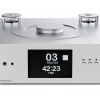

















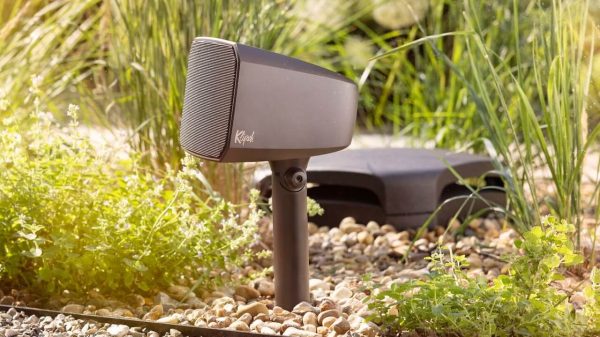




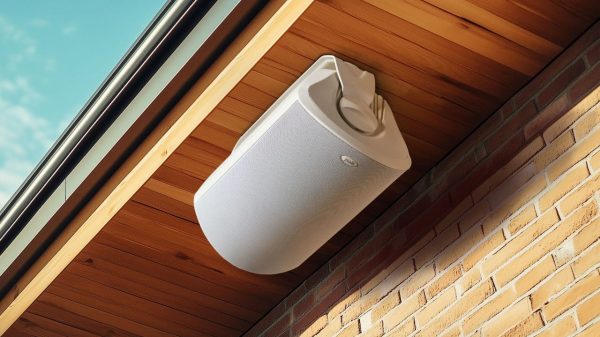
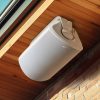



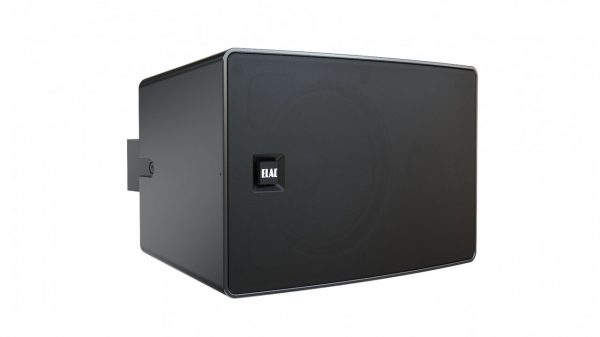
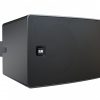













Brian Gerk
July 12, 2021 at 9:21 pm
Sonos makes a terrific amplifier with the self-explanatory name of Amp that fits this application beautifully. It lets you use any 2 or 4 8 Ohm outdoor speakers hard wired to the indoor Amp. The added benefit is that it gives you the same powerful in-app control of the outdoor sound areas just like you would with any other Sonos room within a home. It is truly the best solution from a whole home audio perspective. Full disclosure: I work for Sonos.
Ian White
July 12, 2021 at 10:52 pm
Brian,
We’ll be covering Sonos wireless speakers for the outdoors next week.
Ian White